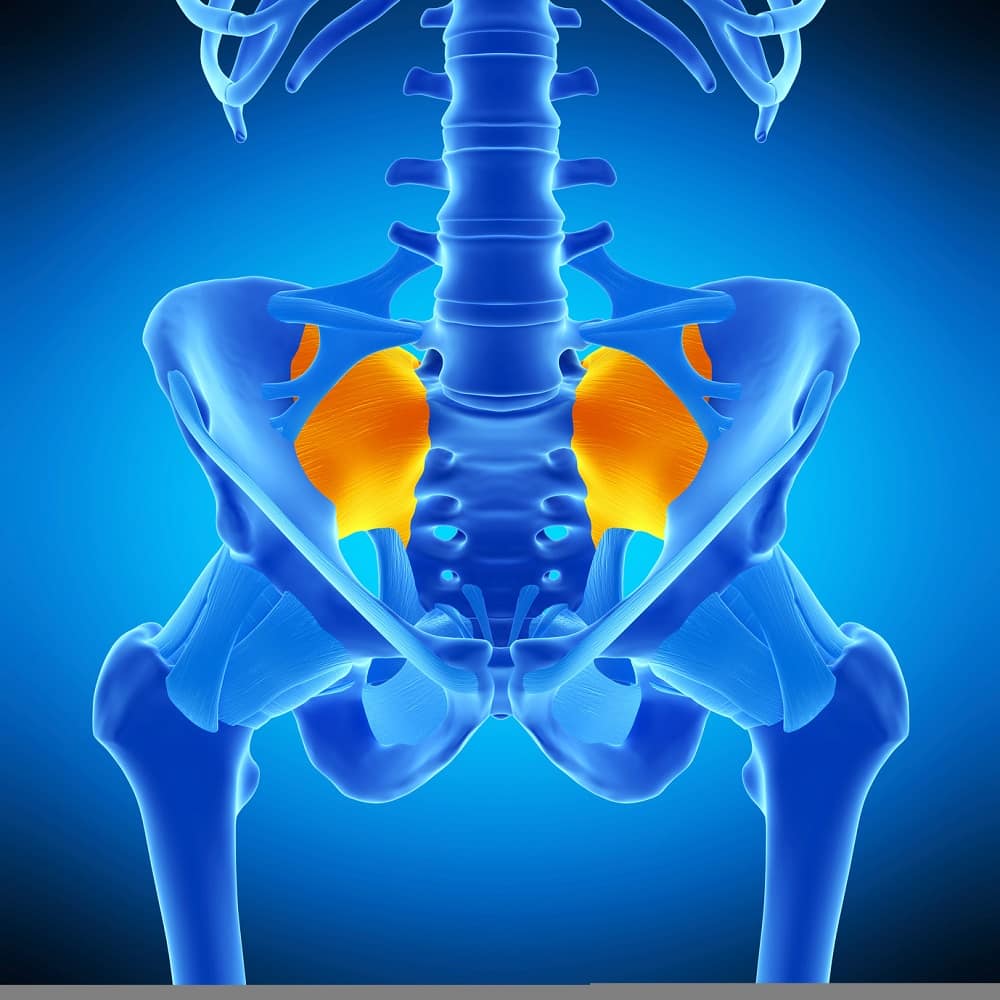The Sacroiliac (SI) Joint is a synovial plane joint, located between the base of the spine (sacrum) and one of three bones that make up your pelvic bowl, the ilium. Within the healthcare community, the sacroiliac joint has caused much disruption on its function, how much motion (if any) occurs between the bones, and whether or not pathology is a true SI joint dysfunction or referral from another source, which will be discussed in this blog series. The SI joint itself is anatomically complex, so we will describe the bony and soft tissue structures and their role on the joint itself.
Bony Structure of SI Joint
The sacrum and ilium each have a significant amount of depressions and protrusions that form a 'lock' between the two bones. There are also many landmarks on each of these bones, which are labeled on the pictures, and form as 'anchors' for the soft tissue structures described below.
Ligaments
The SI joint has 5-6 strong ligamentous structures that form a web, or complex weaving, from the various prominences of the sacrum to coordinating bony landmarks on each ilia in order to secure it and prevent the sacrum from moving. Ligaments are not contractile structures, but instead play a role in preventing the bones that make up the SI joint from excessive movements in specific directions.
Muscles
Between the sacrum and the ilium, there are approximately 35 muscles that connect to one, the other, or both. Perhaps the most recognizable of these muscles is the piriformis, which originates at the sacrum, crosses the SIJ, the ilium, and connects on the femur (it is the only muscle that crosses both the SIJ and the hip). This muscle is frequently referenced, as it is believed to be a major contributor to sciatic nerve pain.
A group of muscles that may also be familiar to you, has SIJ connections, and has many functions is the pelvic floor. The pelvic floor is located within the "pelvic bowl," and is responsible for holding your abdominal contents in place, providing a base for intra-abdominal pressure, as well as assisting to control excretory functions.
If you think you may have sacroiliac joint pain, hip pain, or other pelvic pain, be sure to contact your Set Physical Therapy clinician for a consultation or evaluation, and be sure to stay tuned for more information on the SI joint!





